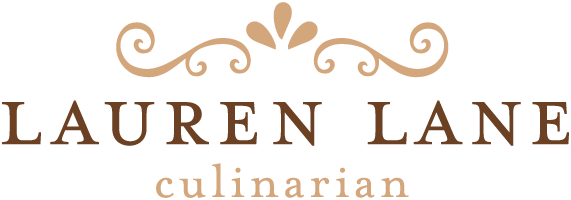Cooked Salmon Temperature- How to get right!
Cooked Salmon Temperature: How to cook your salmon perfectly every time.
Salmon is such a fabulous ingredient because of its health benefits and flavor. But how to get the cooked salmon temperature perfectly can sometimes be tricky. Whether you’re baking it, grilling it, or pan-searing it, getting the right cooked salmon temperature is the secret to tender, juicy, and flavorful fish every time. I know, I know, some people like to have their salmon well done. And I'll cover that too, but I encourage you to try it medium-rare because that's my favorite eat it. Ha Ha!
Why Cooked Salmon Temperature Matters
So what’s the perfect baked salmon temp oven setting and time to get the best results? The correct temperature isn’t just about taste; it’s also about food safety. Undercooking can leave harmful bacteria, while overcooking can make your fish dry, and unflavorful. The sweet spot? Achieving a moist, flaky texture that practically melts in your mouth.
Photo from Up splash
What Temp is Salmon Fully Cooked?
According to the USDA, salmon is considered safe to eat when its baked salmon temperature internal reaches 145°F (63°C). But here’s the thing: Many chefs (including myself) recommend slightly lower temperatures for optimal texture and flavor. We’ll break this down based on how you like your salmon cooked.
What Temp is Salmon Fully Cooked?
According to the USDA, salmon is considered safe to eat when its baked salmon temperature internal reaches 145°F (63°C). But here’s the thing: Many chefs recommend slightly lower temperatures for optimal texture and flavor. We’ll break this down based on how you like your salmon cooked.
How to Measure Cooked Salmon Temperature
Investing in a good meat thermometer is a game changer. Insert it all the way into the salmon, and pull it out slowly. The lowest temperature reading is the accurate one. It will read a higher temp the farther you head toward you pan, so that's why we pull it out slowly to get the correct temp. No thermometer? Don’t worry. You can also test for doneness with a fork: if the fish flakes easily, it’s probably ready.
Baked Salmon Temp Oven Setting: It depends:)
For baked salmon lovers, knowing the baked salmon temp oven setting and time is key. Here’s a quick guide:
Broil Setting: Learning how broil salmon perfectly is easier then you think:
If you’re wondering how broil salmon can create such a deliciously crisp top layer, it’s all about high heat and short cooking time.broiling rather than baking the fish allows you to sear the outside with an intense blast of heat while leaving the interior tender and juicy. My private chef clients say it’s the best salmon they’ve ever had. Just say’in;)
Baked Salmon Temp
Image by the Yummy Bowl
Baked Salmon Temp and Time
350°F (175°C): A lower temp for a more gentle bake, great for moist salmon. At 350°F, a salmon fillet takes approximately 12-15 minutes per inch of thickness to bake
375°F (190°C): The middle ground for perfectly balanced results. When baking salmon at 375°F, it typically takes around 10-12 minutes per inch of thickness
400°F (200°C): For a crispier top and a little more dry. When baking salmon at 400°F, it typically takes around 8-10 minutes to cook through, depending on the thickness of the fillet; thinner fillets will cook faster, while thicker ones may need a few extra minutes
Pro tip: Always check the baked salmon temperature internal with a thermemeter to ensure it’s just how you like it.
Photo Upsplash
Rare, Medium, or Well-Done Salmon?
Here’s a quick guide to cooked salmon temperature for rare, medium, and well-done salmon:
Rare: 120°F (49°C) – Soft, silky texture with a slightly translucent center.
Medium: 130-135°F (54-57°C) – The sweet spot for most people, with a juicy, flaky texture.
Well Done: 145°F (63°C) – Fully opaque and firm, but watch out for dryness.
Feeling adventurous? Try experimenting with different doneness levels to find your favorite!
Photo from Brain Charity
Different Salmon Recipes
Classic Citrus Zest:
Fresh lemon or lime zest adds a zing that complements salmon's natural richness.
Herby Dill:
Dill provides a fresh, aromatic note, enhancing the overall flavor profile. Add chopped or mixed with sour cream or mayo. ummm.
Garlic Goodness:
A touch of garlic powder or minced garlic elevates salmon flavors.
Smoky Paprika:
Smoked or regular paprika imparts a smoky depth, perfect for adding a hint of complexity.
Peppery Black Pepper:
Freshly ground black pepper adds a warm, peppery kick that complements the salmon's richness.
Kosher Salt Simplicity:
Simple sea salt highlights the salmon's natural flavors without overpowering. Or mix with lemon zest.
Soy Sauce Elegance:
A drizzle of soy sauce brings a savory umami element, creating a perfect balance.
Maple Syrup Sweetness:
A touch of maple syrup adds a subtle sweetness, creating a harmonious contrast.
Spicy Salmon Dishes:
For those who crave heat, simple crushed red pepper flakes provide a fiery kick to your salmon.
Or for a more complex flavor, combine:
1 tablespoon brown sugar optional; omit for Paleo or Whole30
1 1/2 teaspoons chipotle chile powder
1 medium lime zest and 1 tablespoon juice
1 tablespoon brown sugar optional;
salt and pepper
Storage Tips
To Store. Refrigerate salmon in an airtight container for up to 2 days.
To Reheat. Very gently rewarm leftovers in a baking dish in the oven at 350 degrees F or in the microwave.
To Freeze. Freeze salmon in an airtight, freezer-safe storage container for up to 3 months.
What to Serve with Salmon?
Crispy Parmesan Roasted Potatoes




